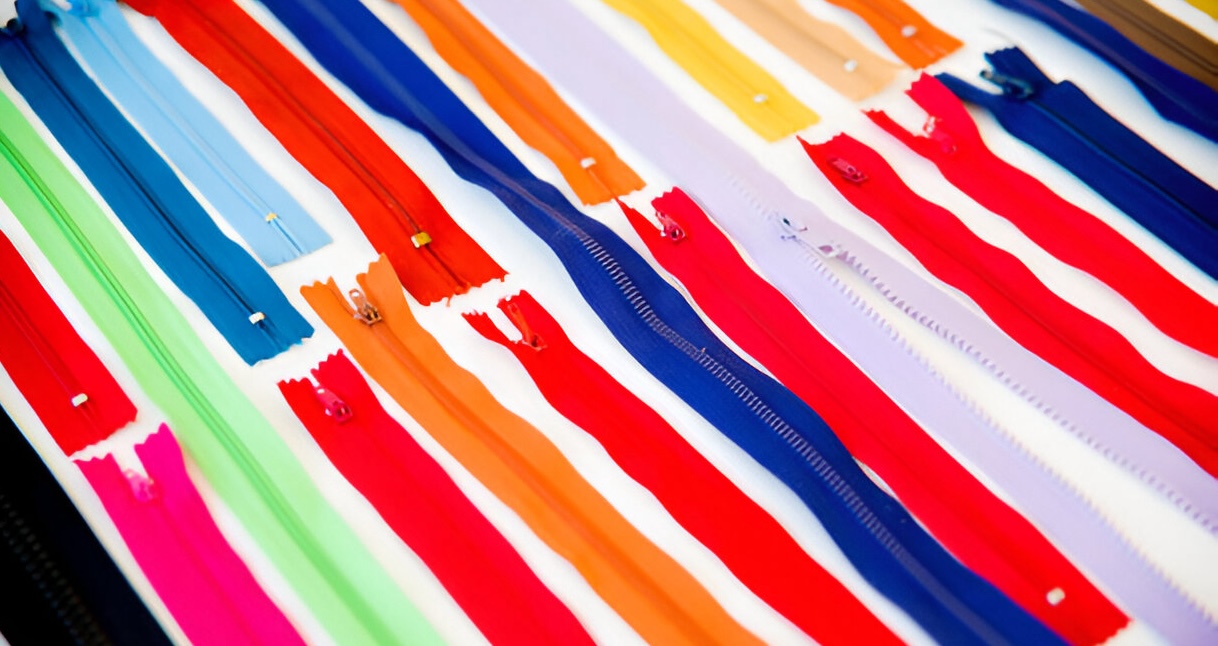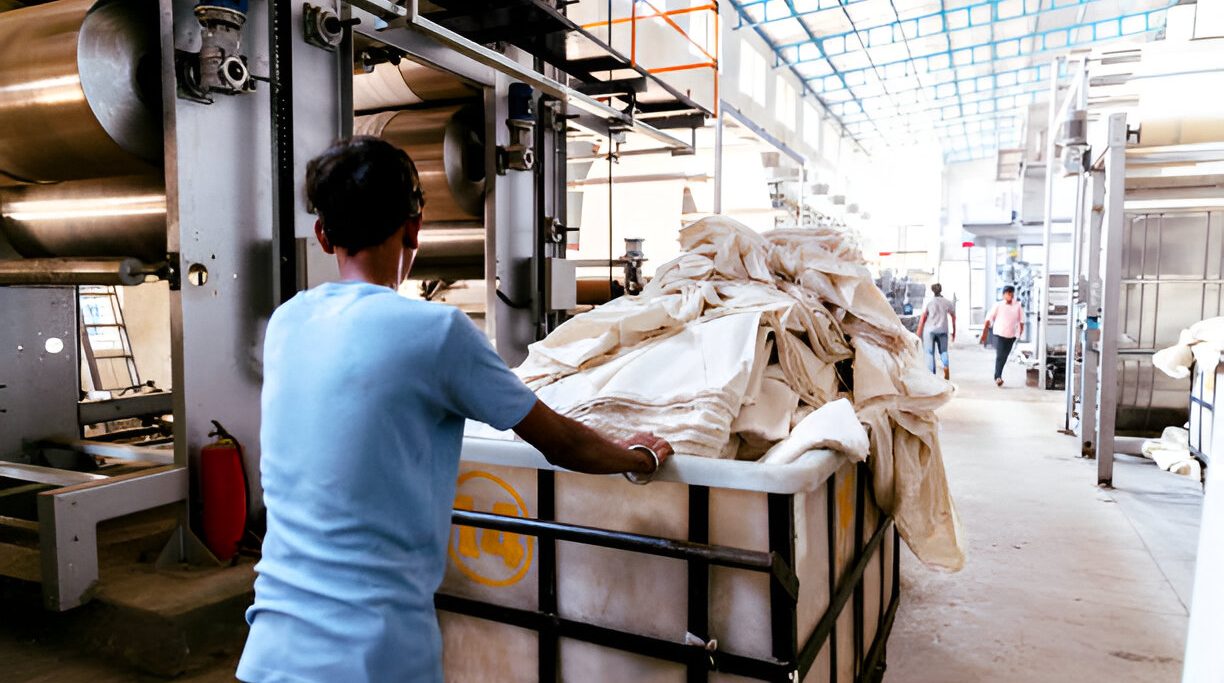Zippers are essential in the fashion industry, playing a crucial role in both functionality and aesthetics. From the sturdy zippers in jackets to the nearly invisible ones in elegant dresses, types of zippers in clothes is vast and diverse. Understanding the different types of zippers and their applications can help you make the best choices for your garments. This guide will walk you through the various types of zippers found in clothes and their specific uses.
1. Coil Zippers (Nylon Coil Zippers)
Description: Coil zippers are made with a continuous coil of monofilament, usually nylon, sewn onto the zipper tape. The teeth are flexible and soft, making these zippers lightweight and less bulky.
Uses:
– Often used in lightweight garments such as dresses, skirts, and blouses.
– Common in bags, purses, and sportswear because of their durability and flexibility.
– Ideal for applications where the zipper needs to bend or curve, such as in fitted garments.
Benefits:
– Smooth and flexible, perfect for delicate fabrics.
– Available in a wide range of colors and sizes.
– Less likely to get caught in fabric, reducing wear and tear.
2. Invisible Zippers
Description: Invisible zippers, also known as concealed zippers, are designed to be hidden within the seam of the garment, leaving only the zipper pull visible. The zipper teeth are on the reverse side, ensuring a seamless look.
Uses:
– Commonly used in formal dresses, skirts, and trousers where a clean, smooth appearance is desired.
– Ideal for wedding dresses, evening gowns, and any design requiring an uninterrupted line.
Benefits:
– Virtually invisible when sewn correctly, maintaining the aesthetic of the garment.
– Lightweight and available in a variety of lengths to suit different needs.
3. Metal Zippers
Description: Metal zippers have teeth made from metal, often brass, aluminum, or nickel. The teeth are attached to the tape through a process of clamping each tooth individually.
Uses:
– Common in jeans, jackets, boots, and heavy-duty garments where strength and durability are necessary.
– Often used as a decorative element in dresses and skirts, adding an edgy or industrial touch.
Benefits:
– Highly durable and long-lasting.
– Available in a variety of finishes, including antique brass, silver, and gold.
– Adds a bold, statement look to any garment.
4. Molded Plastic Zippers
Description: Molded plastic zippers have teeth made from plastic that are molded and fused directly onto the zipper tape. These zippers are lightweight, smooth, and come in a variety of colors.
Uses:
– Frequently used in children’s clothing, lightweight jackets, and dresses.
– Ideal for raincoats and swimwear due to their water-resistant properties.
Benefits:
– Less expensive than metal zippers.
– Resistant to rust, making them ideal for outdoor wear and sportswear.
– Available in a range of colors that can be matched to fabric.
5. Separating Zippers (Open-End Zippers)
Description: Separating zippers, also known as open-end zippers, can completely separate into two pieces when unzipped. The zipper has a box and pin mechanism at the bottom, allowing it to detach fully.
Uses:
– Commonly used in jackets, coats, and hoodies where the front needs to open entirely.
– Found in some dresses and outerwear with front openings.
Benefits:
– Provides ease of use and quick access.
– Ideal for outerwear, making it easier to put on and take off.
6. Two-Way Zippers
Description: Two-way zippers have two sliders that can be opened from either end, allowing the garment to open from the top or bottom.
Uses:
– Common in jackets, parkas, and luggage where adjustable opening is beneficial.
– Used in coats where ventilation or easy access to inner pockets is needed.
Benefits:
– Offers flexibility and convenience in adjusting the opening.
– Great for long garments, allowing movement freedom at both ends.
7. Waterproof Zippers
Description: Waterproof zippers are designed to keep water out. They are usually made with nylon coil teeth and have a waterproof coating or flap that covers the zipper when closed.
Uses:
– Common in raincoats, wetsuits, and outdoor gear.
– Used in sportswear, including jackets and pants meant for harsh weather conditions.
Benefits:
– Provides superior water resistance, keeping the wearer dry.
– Durable and designed to withstand challenging environmental conditions.
8. Decorative Zippers
Description: Decorative zippers are designed more for aesthetics than function, often featuring unique teeth designs, vibrant colors, or additional embellishments.
Uses:
– Used in fashion garments where the zipper is intended to be a design element.
– Popular in trendy dresses, skirts, and jackets.
Benefits:
– Adds a unique, stylish touch to garments.
– Available in a variety of finishes and decorative pulls.
9. Continuous Zippers
Description: Continuous zippers are sold in long rolls without end stops, allowing custom lengths and the ability to add multiple sliders.
Uses:
– Common in upholstery, cushions, and custom sewing projects.
– Useful in garments requiring extra-long zippers or those needing multiple zipper pulls.
Benefits:
– Highly versatile for custom projects.
– Can be cut to the desired length, making them ideal for non-standard applications.
10. Reversible Zippers
Description: Reversible zippers have pulls that work from either side, allowing garments to be worn inside-out or used from both directions.
Uses:
– Frequently found in reversible jackets and bags.
– Used in garments designed for dual wearability.
Benefits:
– Increases the versatility of the garment.
– Convenient for multi-functional clothing items.
Choosing the Right Zipper for Your Garment
Selecting the right zipper depends on several factors, including the type of garment, fabric weight, intended use, and aesthetic preference. For delicate fabrics like silk, invisible or nylon coil zippers work best. For sturdy materials like denim or leather, metal zippers provide the necessary strength.
Zipper Maintenance Tips
– Keep Zippers Clean: Regularly clean zippers with a soft brush to remove dirt and debris that can hinder their functionality.
– Lubricate Metal Zippers: Use a zipper lubricant or a simple household item like a candle to keep metal zippers running smoothly.
– Handle with Care: Always unzip slowly and avoid forcing zippers, which can damage the teeth and slider.
Understanding the different types of zippers and their uses can greatly enhance your sewing projects and garment designs. Whether you’re looking for something discreet like an invisible zipper or a bold, eye-catching metal zipper, each type serves a unique purpose. By selecting the right zipper, you can ensure your garments are not only functional but also stylish and durable.



